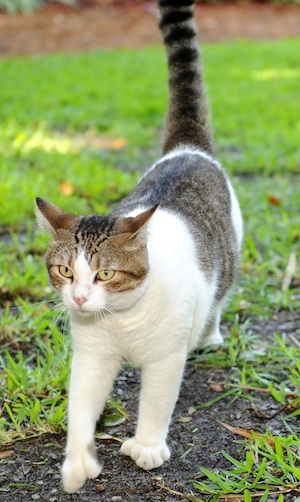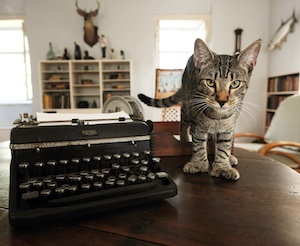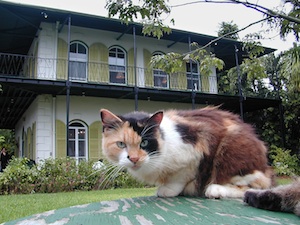Hemingway's Muse Meows
Ernest Hemingway spent the most productive years of his life living in a Spanish colonial villa at 907 Whitehead St. in Key West where he wrote 70 percent of his classic works — but at this unique property, the cats come first.
According to Dave Gonzales of the Ernest Hemingway Home & Museum, that's nothing new; Ernest himself was fascinated by felines.
"Hemingway was very much a cat lover," said Gonzales. "He preferred the polydactyls, the six-toed cats that are world famous and sometimes called Hemingway cats."
Hemingway lived in the Key West home from 1931 through 1939 with his second wife Pauline and their two sons.
During that time, in a small second-story writing studio behind the house, he worked on many of his best-known novels and short stories. Among them are "For Whom the Bell Tolls," "The Snows of Kilimanjaro" and the Key West-based "To Have and Have Not," his only novel set in the United States. Fittingly, the property has been designated a literary landmark.
Today, visitors touring the home-turned-museum are likely to find a cat or two unconcernedly sprawled on the writing studio's table or napping on Hemingway's former bed. Scores of them roam the grounds, seemingly secure in the knowledge that they belong there.
In fact, the cats have become almost as big an attraction as the author's legacy.
Most are named for Hemingway contemporaries or noted personalities such as Spencer Tracy, Gertrude Stein and Emily Dickinson. Many of them have oversized and slightly comical six-toed paws.
They owe their extra digit, Gonzales explained, to Snowball.
Snowball was Hemingway's first polydactyl cat, given to the author's sons Patrick and Gregory by a sea captain after the boys ran some errands for him. According to Gonzales, captains apparently had a particular fondness for six-toed felines.
"They were thought to give the captains calm seas, prevailing winds and safe passage on their journeys," he said. "They were considered lucky cats or mystical cats.
"Therefore, captains being very superstitious, they had the cats on board the ship for their mystical or magical powers as well as their ability to catch mice better with that extra digit," Gonzales added.
Snowball's "magic" probably didn't have anything to do with Hemingway's literary prowess during his Key West years. But for Ernest and his family, as for many other island residents, one cat led to another. Eventually, Gonzales reported, some 50 cats roamed the property.
About the same number live at the Hemingway home today, and they're pampered as befits the descendants (whether actual or honorary) of a literary giant's muse "meows." Their lives consist of good food, naps in sunny spots, admiration from an unceasing stream of visitors, and health care from a veterinarian who makes house calls every Wednesday.

Benny Goodman strolls the grounds. Image: Rob O'Neal

Hairy Truman's picture has been seen around the world. Image: Rob O'Neal

Ernest Hemingway lived and wrote in Key West from 1929 to 1939, and descendants of his six-toed cats still live on the grounds of the Hemingway Home & Museum. Image: Andy Newman

